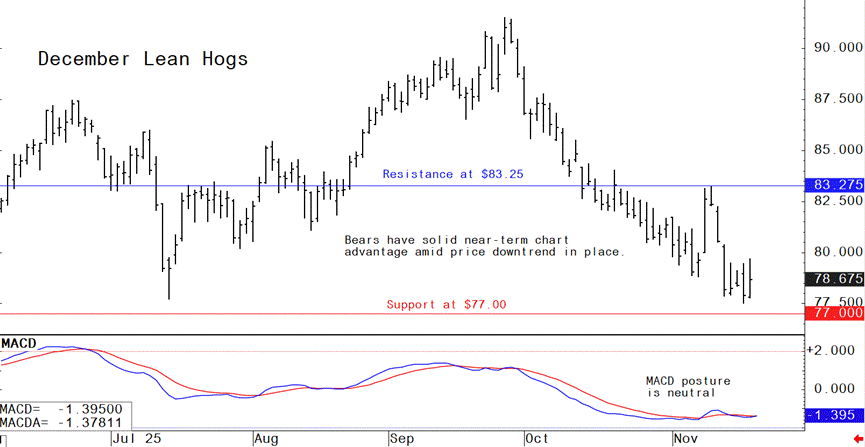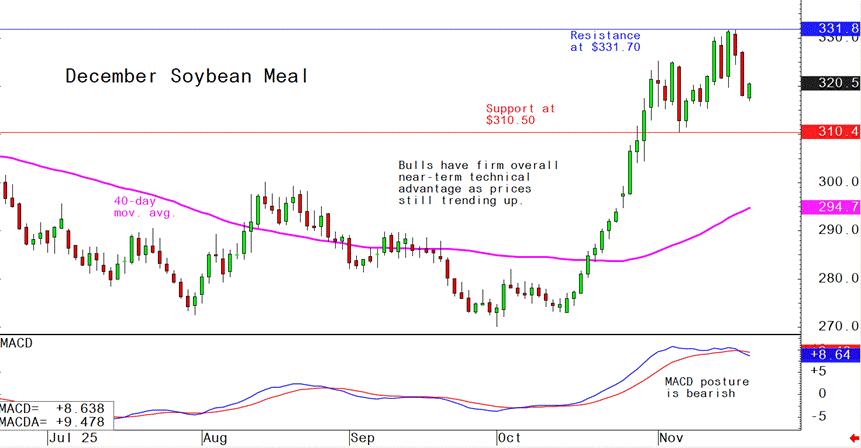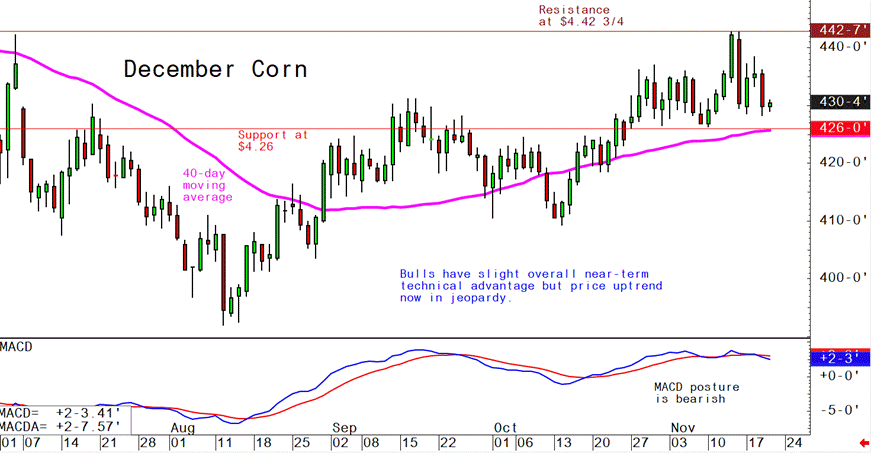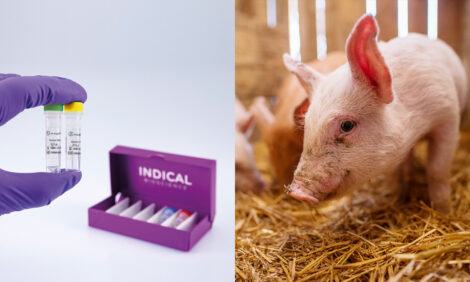



Pig outlook: Lean hog futures bears remain in control
Livestock analyst Jim Wyckoff reports on global protein news
December lean hog futures on Wednesday rose 95 cents to $78.85. The market saw short covering in a bear market. Steadily declining cash hog prices and weakening pork cutout values limited buying interest and will likely continue to do so. Prices remain in a downtrend on the daily bar chart and the path of least resistance for prices remains sideways to lower. Lean hog futures’ present discount to the cash hog market has so far not worked much in limiting selling in hog futures. The latest CME lean hog index is down another 33 cents at $86.67. Thursday’s projected cash index price is down 40 cents to $86.27. Wednesday’s national direct 5-day rolling average cash hog price quote was $76.55.
Veteran analyst and trader: USDA’S 2026 livestock outlook is way off
Analyst warns agency is relying on backward-looking data and will miss supply by a wide margin
USDA’s decision to revise beef and pork production forecasts lower for 2026 is nothing new —"but it is also fundamentally flawed,” says a longtime livestock analyst and trader. The source says the agency continues to anchor its projections almost entirely on historical slaughter data rather than forward-looking supply indicators. As a result, the analyst predicts, “USDA is set to miss 2026 production by roughly 1 million head each in pork and beef.”
“We have already begun revising our own pork and beef production expectations higher from June 2026 forward, consistent with what we noted in late September and October,” the analyst continues. “That assessment still stands. USDA will almost certainly be forced to revise [Friday’s] and upcoming reports upward — likely dramatically — though the agency may not fully recognize this reality until January 2027 and beyond. The magnitude of that adjustment will surprise many, but it shouldn’t: USDA similarly misread current supply trends dating back to early-to-mid 2024 and has been playing catch-up ever since.”
Much of the industry chatter still insists that 2026 beef production will be extremely tight, with nothing having changed. “That argument is the same one we pushed back on in 2022, 2023 and 2024,” the analyst continued. “Yes — prices can still rally into the spring or summer of 2026. But as of fall 2025, the forecasting priority should shift toward identifying the bottom of the 2026 beef production trough, the impact of rising imports, and the prospect of growing U.S. production from mid-2026 forward. A major risk to the widely anticipated front-end market rally lies in Mexico’s expected reopening this winter. When that occurs, feedyards will shorten days on feed and move the roughly 300,000 head of cattle that have been carried with extended days for the past 18 months. That supply release will matter.”
Bottom line, according to the analyst: “If USDA continues to base its livestock WASDE outlook solely on backward-looking slaughter data, it raises a simple question: Why publish it at all?”
Trump calls out “Big Four” meatpackers as foreign-owned cartels
A Bloomberg opinion story over the weekend highlighted President Trump calling on the U.S. Justice Department to investigate the so-called Big Four meatpacking conglomerates “that have a hammerlock on beef processing, distribution and pricing in the U.S.” Trump’s allegations are serious: price fixing, collusion and market manipulation by what he calls “foreign-owned meatpacking cartels.” Together, the Big Four control 85% of the U.S. beef market, which the White House says amounts to monopoly power, allowing the companies to slash payments to farmers, reduce herd sizes, drive up consumer prices and jeopardize the nation’s food supply, said Bloomberg. “Action must be taken immediately to protect consumers, combat Illegal monopolies, and ensure these corporations are not criminally profiting at the expense of the American people,” Trump posted on his social network.
The Big Four themselves have chosen not to comment on the investigation or the president’s allegations. But the Meat Institute, a trade group representing meat and poultry processors, said beef packers have been losing money because of tight cattle supplies and strong demand. Recent Trump administration actions have concerned many U.S. farmers—namely a trade showdown with China that prompted China to stop buying U.S. soybeans, and Trump threatening to import more beef from Argentina. President Trump may have won back a measure of farmer support by attacking four of the best-known names in agribusiness: Minnesota’s Cargill, one of the largest privately held companies in the country; Tyson Foods, a major meat and poultry producer out of Arkansas; and JBS in Colorado and National Beef Packing Company in Missouri. The latter two are owned by companies in Brazil but have their U.S. headquarters in those states. The U.S. beef market was valued at more than $108 billion in 2024, said the Bloomberg opinion piece.
The next week’s likely high-low price trading ranges:
December lean hog futures--$77.00 to $82.00 and with a sideways-lower bias
December soybean meal futures--$310.50 to $330.00, and with a sideways bias
December corn futures--$4.25 to $4.40 and a sideways bias
Latest analytical daily charts lean hog, soybean meal and corn futures












